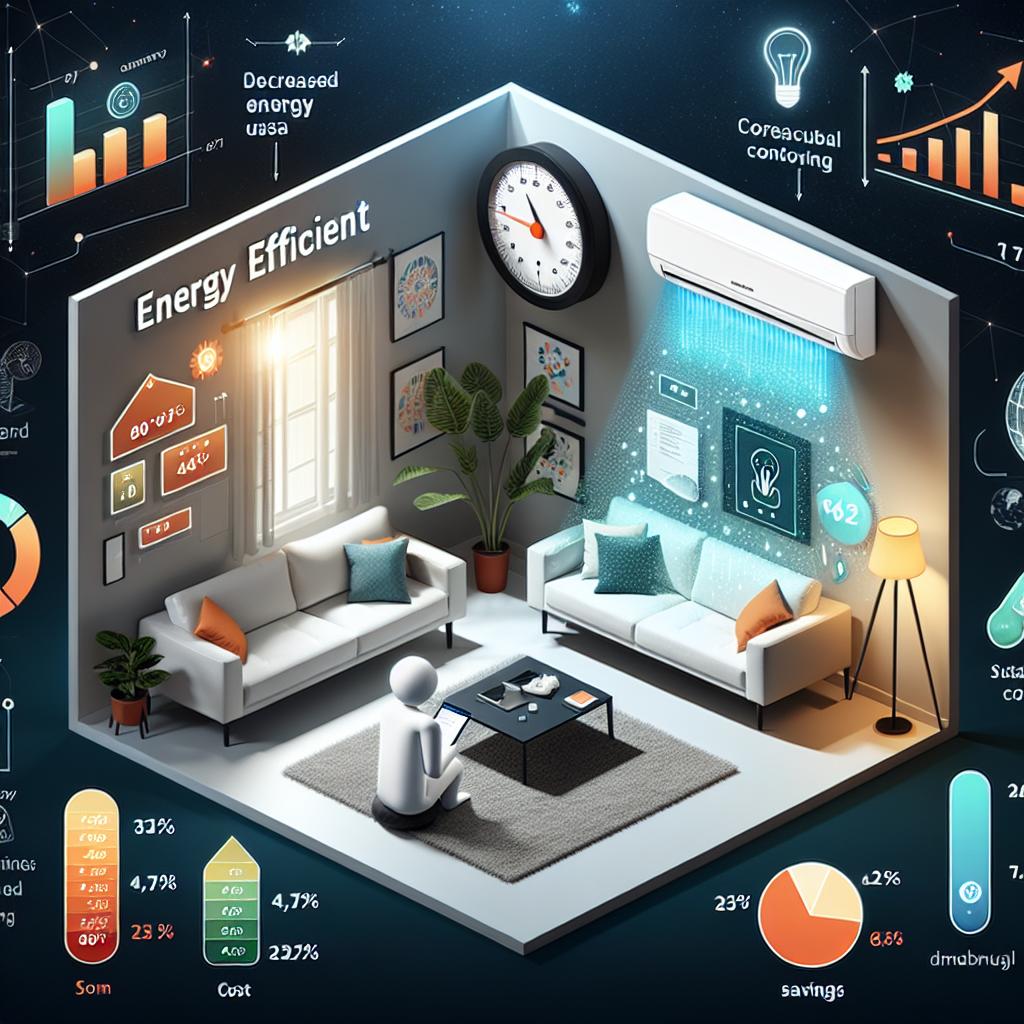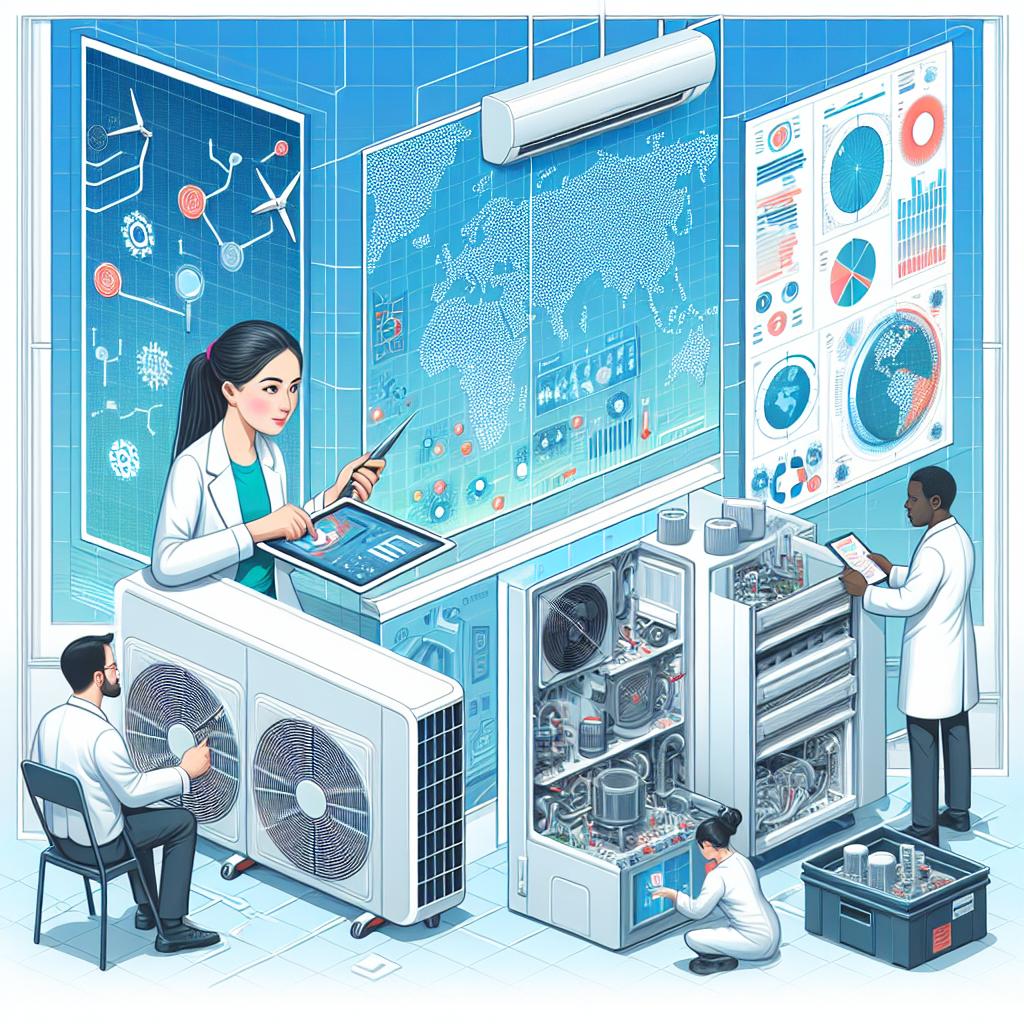In a world where precision is paramount, maintaining optimal climate conditions has become a non-negotiable factor for a myriad of specialized commercial environments. From laboratories where sensitive experiments unfold to server rooms housing critical technology, the need for effective temperature control is evident. Enter the mini split air conditioning systems—an innovative solution that balances efficiency with versatility. These compact units not only cater to the unique cooling and heating demands of diverse spaces but also provide an adaptive response to fluctuating environments. In this article, we will explore the pivotal role of mini split AC systems in managing temperature control within specialized commercial settings, revealing how they help to enhance operational efficiency, safeguard valuable assets, and create conducive atmospheres for work and innovation. As we delve into the intricacies of these systems, we’ll uncover how their design and functionality align with the specific needs of various industries, transforming climate control from a mere necessity into a strategic advantage.
Understanding Mini Split AC Systems and Their Unique Advantages
Mini split AC systems shine in providing tailored temperature control, particularly in specialized commercial environments such as restaurants, server rooms, and manufacturing facilities. What sets them apart is their ductless design, which allows for flexibility in installation and reduced energy loss. Not bound by traditional ductwork, these systems consist of an outdoor compressor unit and one or more indoor air handling units that can be independently controlled. This means that zoning options become possible, allowing different areas within a facility to maintain optimal temperatures based on specific requirements, significantly enhancing comfort and efficiency.
The advantages extend beyond simple climate control; mini split systems can lead to substantial operational savings. Their high energy efficiency ratings contribute to lower electricity bills, an essential consideration for business owners. Additionally, features such as inverter technology allow for variable speed operation, reducing wear and tear on the unit while minimizing noise. The potential for improved air quality is also noteworthy, as many systems come equipped with advanced filtration options that help remove dust, allergens, and other contaminants from the air. This combination of performance, efficiency, and comfort makes mini split AC systems an excellent choice for environments requiring precise temperature management.

Optimizing Temperature Regulation in Sensitive Commercial Spaces
In specialized commercial environments, maintaining precise temperature control is crucial for ensuring operational efficiency and safeguarding sensitive equipment. Mini split AC systems emerge as an ideal solution, offering both versatility and efficiency. These systems can be configured to operate independently across multiple zones, allowing for tailored temperature settings based on specific requirements. By utilizing advanced inverter technology, mini splits provide variable speed control, enabling them to adapt seamlessly to fluctuating thermal loads and delivering consistent comfort while minimizing energy waste.
Key advantages of mini split systems include their compact design, which allows easy installation in limited spaces, and their quiet operation, ensuring a distraction-free atmosphere essential for environments like laboratories or healthcare facilities. Additionally, many models feature built-in air purification systems that enhance indoor air quality by reducing allergens and contaminants. The performance of these units can be further optimized when paired with smart thermostats, allowing real-time monitoring and adjustments from any location.

Energy Efficiency and Cost Savings in Mini Split Systems
Mini split systems are renowned for their impressive energy efficiency, making them a cost-effective solution for maintaining optimal temperatures in specialized commercial environments. Unlike traditional HVAC systems, these units provide targeted cooling and heating, significantly reducing energy consumption. Here are a few reasons why mini splits are superior in terms of energy efficiency:
- Zoned Cooling: Individual units allow businesses to cool specific areas as needed, minimizing waste and enhancing comfort.
- No Duct Loss: Mini splits eliminate energy loss common in ducted systems, where conditioned air can escape.
- Inverter Technology: Many mini splits utilize inverter technology, which adjusts power based on the required capacity, resulting in lower operational costs.
When considering the potential for cost savings, the long-term benefits of mini split systems extend beyond just lower energy bills. The initial investment is often offset by the reduction in operational expenditures. In fact, many businesses discover that the maintenance costs associated with mini split systems are significantly lower due to their simpler design and fewer mechanical failures. The table below illustrates typical energy savings over a year:
| System Type | Annual Energy Cost (Estimated) | Potential Savings (%) |
|---|---|---|
| Traditional HVAC | $1,500 | – |
| Mini Split System | $1,000 | 33% |
This data underscores the financial incentive for businesses to invest in mini split systems, highlighting their capacity to provide efficient temperature control while adhering to budgetary constraints. As energy costs continue to rise, investing in such systems not only ensures a comfortable working environment but also contributes to overall operational sustainability.

Tailoring Mini Splits for Specific Environmental Needs
Mini split AC systems offer unparalleled flexibility, making them ideal for diverse commercial environments with unique climate control requirements. For instance, laboratories and medical facilities often necessitate precise temperature and humidity levels to safeguard sensitive equipment and specimens. Mini splits can be tailored to provide zoned heating and cooling, allowing for individual control in different sections of the facility. This targeted approach means that areas requiring more stringent climate controls can be maintained independently from regions that may not need the same level of precision.
Similarly, restaurants and food service establishments benefit from the adaptability of mini split systems. These venues usually experience fluctuating heat loads due to cooking processes and customer foot traffic. Mini splits can be programmed to respond dynamically to these changes, maintaining optimal temperatures for both patrons and food preservation. To further illustrate the capabilities, consider the following features that can be adjusted according to specific environmental needs:
| Feature | Benefit |
|---|---|
| Variable Refrigerant Flow | Efficiently manages multiple zones with varying demands. |
| Remote Monitoring | Allows for real-time adjustments and alerts for maintenance. |
| Advanced Filtration | Improves air quality, critical for health and food safety. |
| Smart Thermostat Integration | Enhances energy efficiency through automated temperature adjustments. |
Q&A
Q&A: The Role of Mini Split AC Systems in Temperature Control for Specialized Commercial Environments
Q1: What exactly is a mini split AC system, and how does it differ from traditional HVAC systems?
A1: A mini split AC system is a versatile and efficient air conditioning solution that consists of an outdoor condenser unit and one or more indoor air-handling units. Unlike traditional HVAC systems, which rely on ductwork to distribute conditioned air throughout a space, mini splits operate independently in each zone. This allows for more precise temperature control and energy efficiency, making them particularly beneficial in specialized commercial environments where temperature sensitivity is paramount.
Q2: In what types of specialized commercial environments are mini split AC systems particularly beneficial?
A2: Mini split systems are especially advantageous in environments such as restaurants, server rooms, laboratories, art galleries, and medical facilities. These locations often have specific temperature and humidity requirements that must be rigorously maintained. The ability to control the temperature in individual zones helps to meet these particular needs without the wastage of energy associated with traditional systems.
Q3: How do mini split AC systems contribute to energy efficiency?
A3: Mini split AC systems are designed for high energy efficiency, often coming with SEER (Seasonal Energy Efficiency Ratio) ratings that exceed those of traditional units. They utilize variable speed compressors to adjust cooling output based on the current demand, which minimizes energy consumption. Additionally, since they skip the ductwork, homeowners can avoid the common energy losses of 20-30% that often occur through ducts.
Q4: Can mini split systems handle humid environments effectively?
A4: Yes, mini split systems are adept at managing humidity. Many models come equipped with advanced technology that provides dehumidification alongside cooling. This is particularly useful in settings such as spas, gyms, or tropical climates, where excess moisture can compromise comfort and air quality. By maintaining a balanced humidity level, mini splits aid in the creation of a healthier and more pleasant environment.
Q5: What are some considerations businesses should keep in mind when installing mini split AC systems?
A5: Businesses should assess their unique cooling needs, including the size of the spaces, the number of occupants, and any specific temperature control requirements. Conducting a thorough load calculation is essential to determine the right number of indoor units needed for effective cooling. Additionally, placement is crucial—outdoor units should be positioned for optimal airflow, while indoor units should be strategically installed for consistent air distribution. Consultation with HVAC professionals can ensure that these factors are effectively addressed.
Q6: Are there any drawbacks to mini split systems for commercial use?
A6: While mini split systems offer numerous advantages, they do have some considerations to keep in mind. Initial installation costs can be higher compared to traditional systems, especially in larger spaces requiring multiple indoor units. Furthermore, regular maintenance is essential to ensure optimal performance. Additionally, some may find the aesthetic of indoor units less appealing, although many models are designed to blend seamlessly into a variety of commercial settings.
Q7: How can businesses ensure they get the most out of their mini split AC systems?
A7: To maximize the benefits of mini split systems, businesses should prioritize regular maintenance, such as cleaning filters and ensuring the outdoor units are unobstructed. It’s also wise to invest in energy-efficient models that include smart technology, allowing for precise control over cooling schedules. Lastly, providing staff with training on how to effectively use the systems can lead to both comfort and energy savings.
Q8: What’s the future of mini split systems in commercial applications?
A8: As the demand for energy efficiency and customizable climate control grows, mini split systems are likely to become even more prevalent in specialized commercial environments. Innovations in technology, such as IoT integration and advanced climate control features, will continue to enhance their functionality and appeal. This rise corresponds with a broader trend towards sustainable practices in the commercial sector, ensuring that mini splits play a critical role in temperature management for years to come.
Closing Remarks
mini split AC systems emerge as unsung heroes in the intricate landscape of temperature control for specialized commercial environments. Their adaptability and efficiency not only meet the unique cooling demands of various sectors but also pave the way for enhanced energy conservation and operational cost savings. As industries continue to evolve, so too will the technologies that support them, and mini splits stand at the forefront, offering tailored solutions that prioritize comfort and performance. Whether in the sterile confines of a laboratory, the bustling atmosphere of a restaurant, or the precision-driven environment of a manufacturing plant, these versatile systems play a crucial role in creating optimal conditions for both people and processes. As we look to the future, embracing such innovative climate control solutions will be essential in nurturing growth and sustaining productivity across diverse commercial landscapes.

